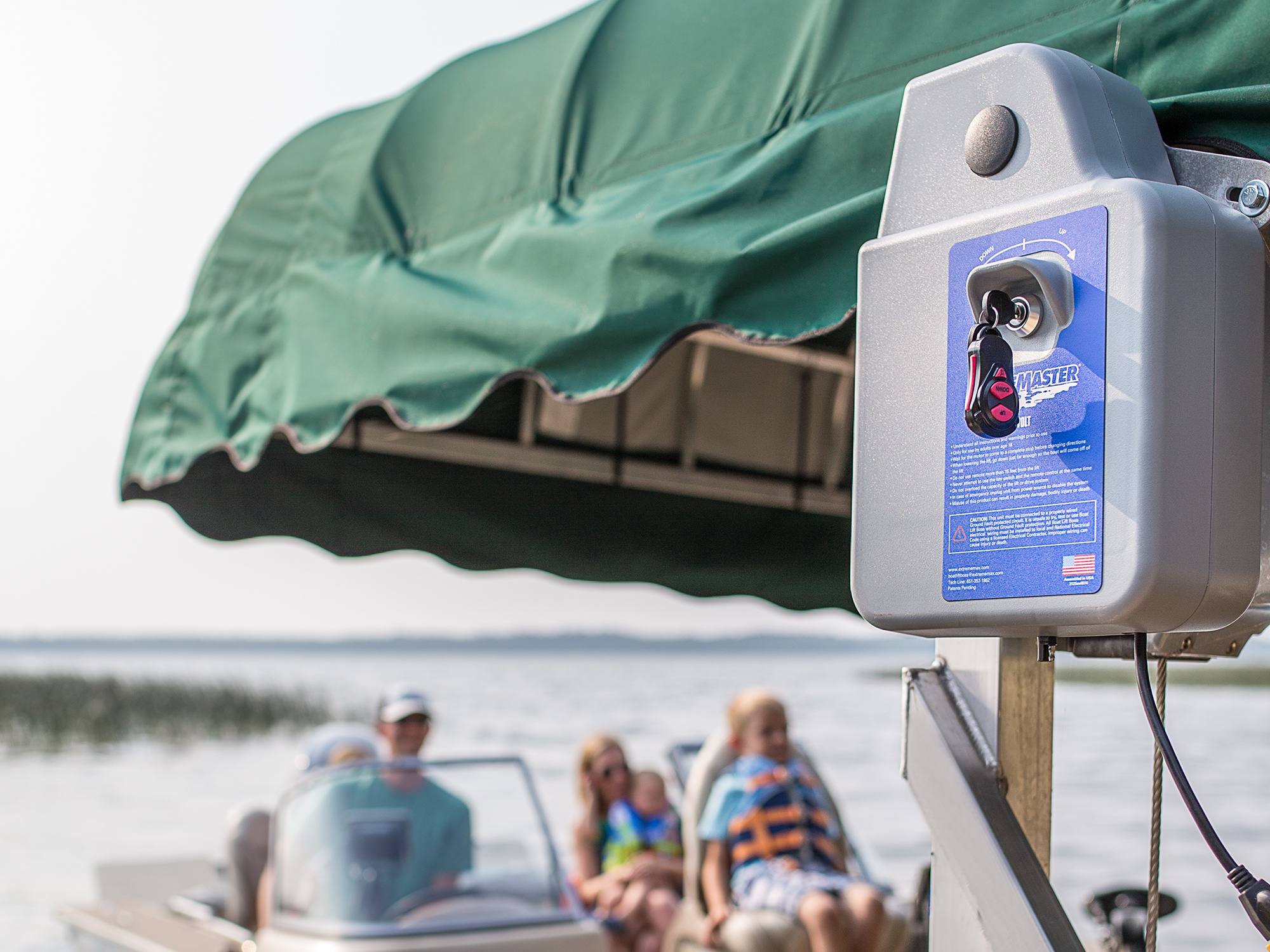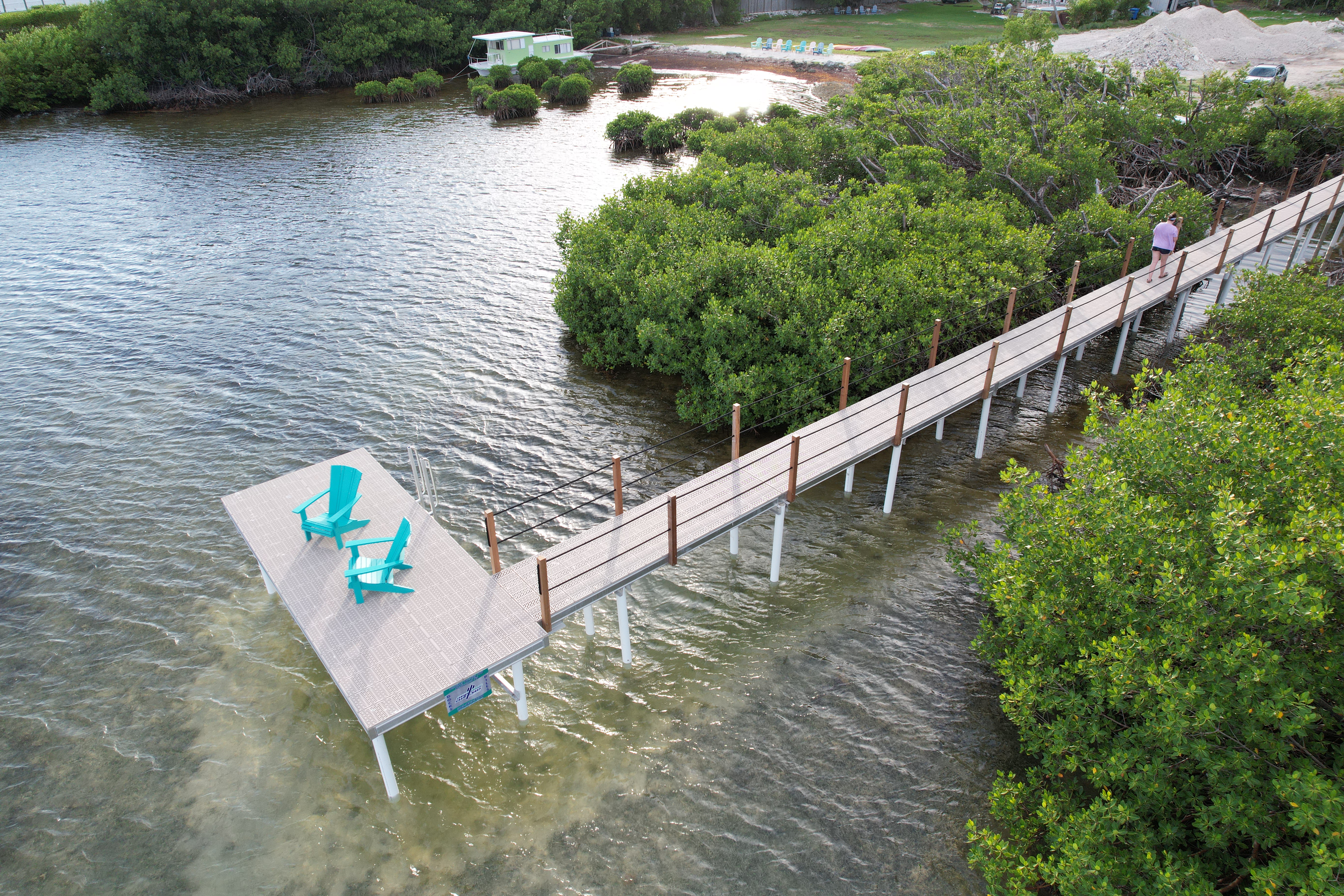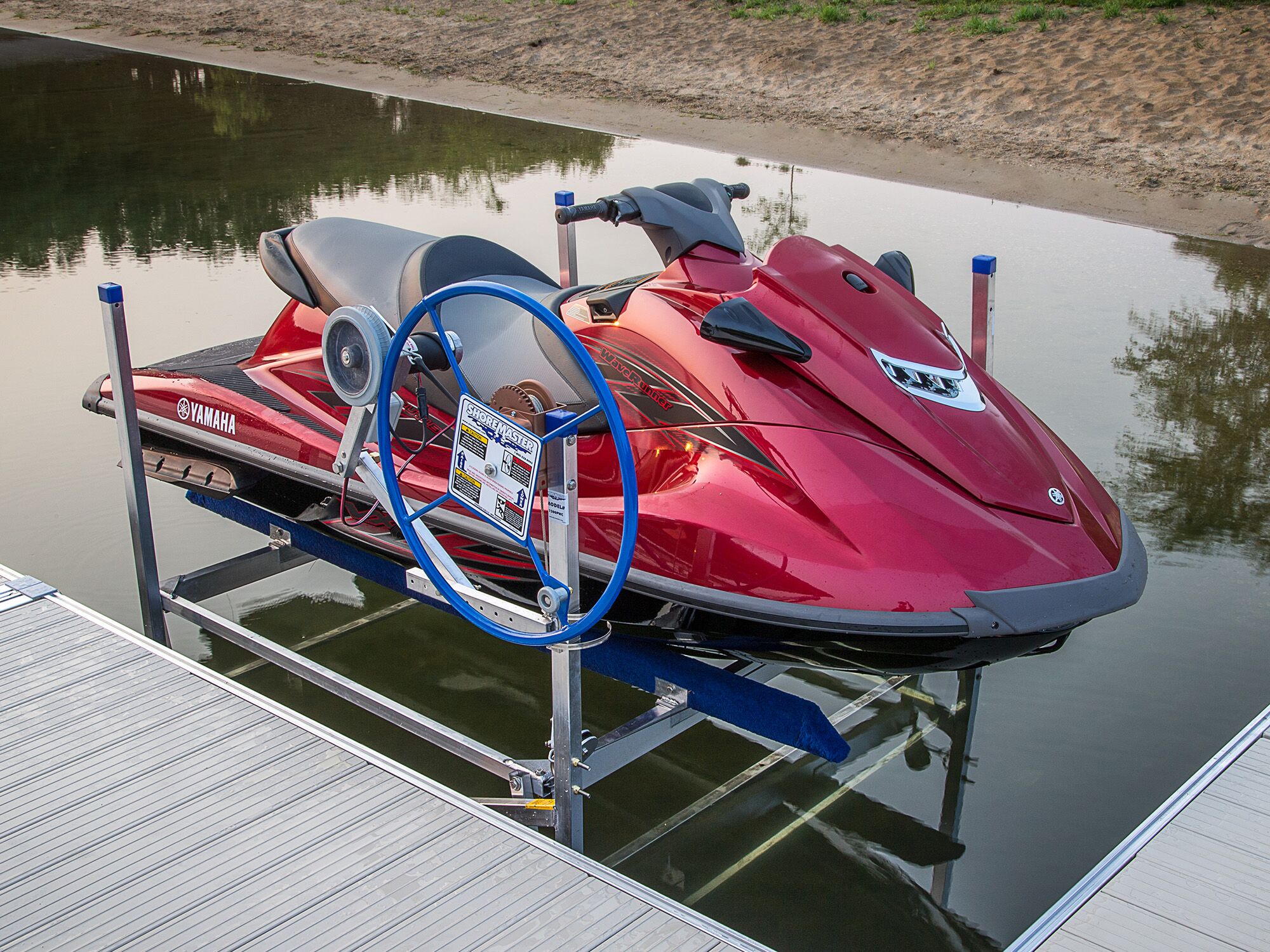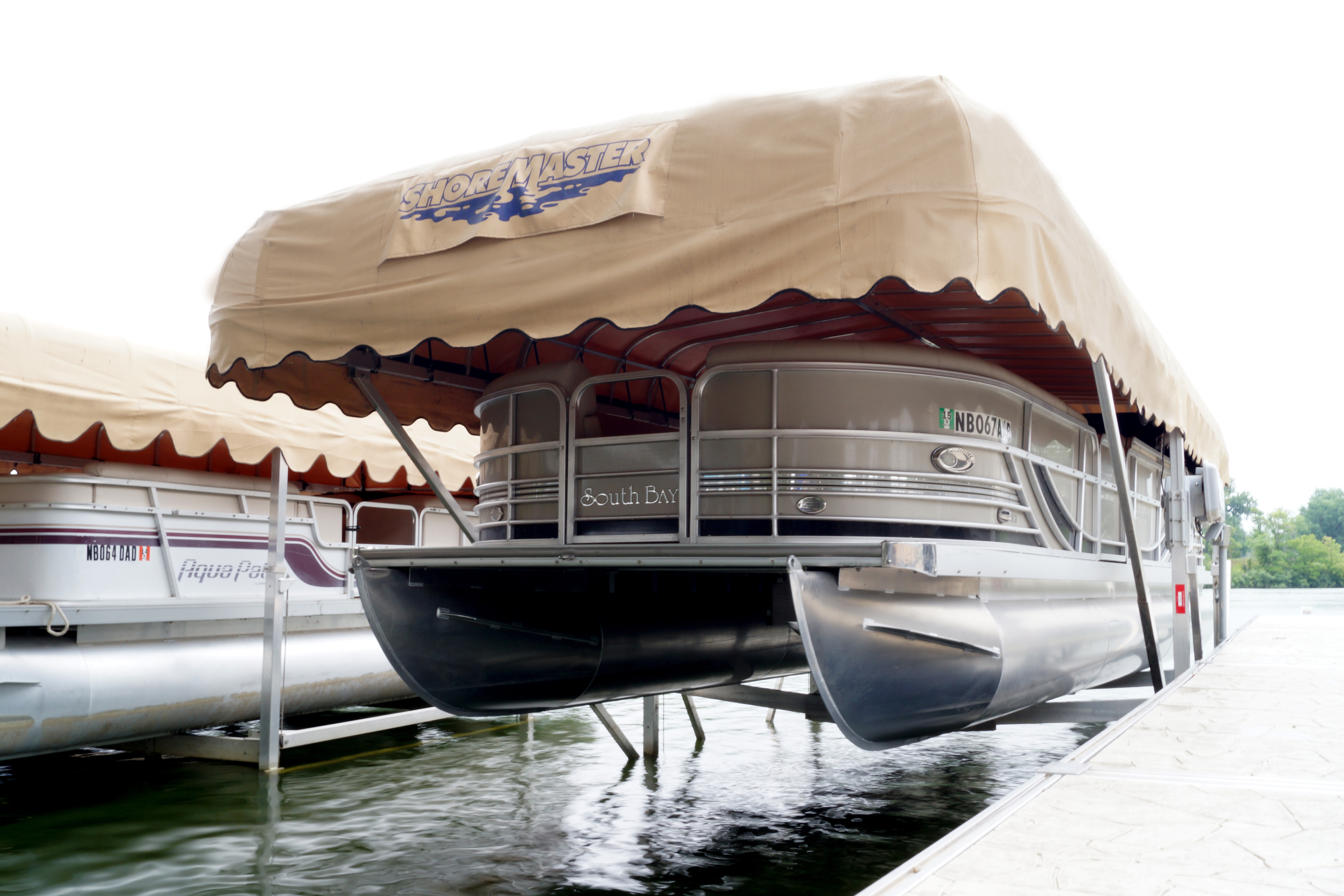July 25, 2024
How to Tell if Your Boat Lift Motor Needs Replacement: Key Signs and Symptoms
Written by ShoreMaster Marketing
In addition to protecting vessels from the elements, the ability to conveniently launch and store boats is the primary benefit of investing in a motorized boat lift. Even the most enthusiastic enthusiast can dread the hassles of trailering and manually cranking the wheel to launch their boats. Much like a boat lift removal tool, motorized boat lifts make your life on the water easier, allowing you to focus on enjoying what you love whenever you desire.

Introduction: The Importance of a Reliable Boat Lift Motor
Boat lift motors eliminate the physical strain involved in manual boat lift operation, enabling you to conveniently, efficiently, and safely get your vessel in and out of the water. However, this convenience can also make maintaining your boat lift motor easy to overlook. Without proper maintenance, boat lift motors can become faulty, potentially causing unnecessary strain on the lift components, the dock, your vessel, and your boating experience.
A faulty boat lift motor can also lead to the following issues:
- Operational inefficiencies: A slow or sluggish motor can significantly increase the time it takes to lift and lower boats, cutting into your valuable time on the water.
- Safety hazards: Even the most reliable boat lift and dock can be at risk from a malfunctioning motor. It could lead to uneven lifting, sudden drops, or complete lift failure, potentially damaging your investments or causing injury.
- Boating disruptions: A failing motor is more susceptible to breakdowns, leaving your boat stranded and requiring untimely repairs. This can drastically impact your boating experience, quickly turning it from seamless to cumbersome.
Fortunately, proper maintenance and being mindful of telltale signs can prevent these from disrupting your boating schedule.
Key Signs Your Boat Lift Motor Needs Replacement
Recognizing the early warning signs of a failing boat lift motor can save you time, money, and potential headaches. Here are some common symptoms to watch out for:
- Unusual noises: Grinding, screeching, or clanging noises during operation are red flags. These sounds suggest wear and tear on the motor’s gears, bearings, or other internal components.
- Slower operation: If the lift takes considerably longer than usual to raise or lower, it could signal a compromised motor and failing components.
- Burning smell: A burning odor emanating from the motor housing is a serious concern. It could signify overheating due to internal friction or electrical issues that could lead to a fire hazard.
- Tripping breakers: Sensitive breakers prevent electric current from leaking into the water, which can pose a significant risk of electric shock drowning (Marina Life, 2019). If your motor keeps tripping breakers, have it serviced immediately.
If any of the above becomes more than an aberration, contact a qualified technician immediately.
How to Replace Your Boat Lift Motor: Step-by-Step Guide
Before you begin, ensure the new motor is compatible with your existing lift model and wiring configuration. Then, gather the necessary tools and materials, including wrenches, screwdrivers, a replacement motor, and safety gear such as gloves and goggles. With that in mind, here’s a general overview of how to replace your boat lift motor:
- Disconnect power: With the boat lowered and secured, turn off the main power breaker supplying electricity to the boat lift motor. We recommend double-checking with a voltage tester to ensure no current is flowing.
- Remove the old motor: Carefully detach the old motor from the boat lift. This may involve removing mounting bolts, screws, brackets, and electrical connections. Keep track of all components, including the color-coding of the wiring harness, for proper reconnection and installation.
- Inspect and prepare: Before installing the new motor, inspect the mounting area and clean any debris or corrosion. Ensure all connections and components are in good condition.
- Install the new motor: Position the new motor in place, and secure it with the necessary bolts, screws, and other hardware. Reconnect any electrical wires according to the manufacturer’s instructions. Double-check all connections for a secure fit.
- Test the motor: Reconnect the power supply and turn on the breaker. Test the motor and the lift controls to ensure it operates smoothly. Make any necessary
This is a general guide, and specific steps may vary depending on your boat lift model. For detailed instructions, refer to the owner's manual. If you’re stuck or need more information on maintenance or replacement parts, contact your local ShoreMaster dealer today for a boat lift repair near me.
Choosing the Right Replacement Motor
The appropriate boat lift motor ensures long-term reliability and performance. Here are the primary considerations to help you make the right choice:
- Compatibility: Ensure the replacement motor is compatible with your specific boat lift model. Different boat lift designs have varying mounting and electrical requirements. Check the manufacturer’s recommendations and specifications to get an accurate match.
- Power and capacity: Choose a motor that can handle the wet weight of your fully loaded boat, including all equipment and gear typically stored onboard. A good rule of thumb is to choose a motor with a capacity 20-25% higher than your boat’s wet weight. For reference, a watercraft with 600 gallons of fuel and 200 gallons of drinking water can add over 6,700 lbs to the boat’s weight (Ita Yachts Canada, 2024).
- Quality and durability: Marine environments can be harsh. Opt for motors from reputable brands known for their build quality, performance, and durability. For instance, ShoreMaster’s boat lift motors are built with corrosion-resistant materials and waterproof, sealed components to keep moisture out and prevent rust and electrical failures.
- Warranty and after-sales support: A good warranty shows a company’s confidence in its products while excellent customer support affirms their commitment to customer satisfaction beyond the initial sale.
If you’re looking to upgrade your boat lift water and make your life on the water easier, consider these two offerings from ShoreMaster:
- LiftMate: The LiftMate is a wheel-to-wheel motor available in 110V and 12V power options. It operates with a simple toggle switch and is compatible with virtually any vertical boat lift with a crank wheel.
- LiftBoss: This direct drive motor is available in 120V, 12V, and 24V power options. The LiftBoss comes in key-turn, corded remote, and wireless remote operation options for the ultimate ease of use. It also boasts long-lasting, corrosion-resistant hardware, and is rigidly tested to ensure durability and reliability. With a 20-minute installation, the LiftBoss is the quickest and easiest way to upgrade your boat lift.
Both motors utilize ShoreMaster’s exclusive Whisper Winch so you can enjoy the industry’s quietest operation. Contact us today to get the most out of your boat lift and maximize your time on the water.
Preventive Maintenance to Extend Motor Lifespan
Here are some non-negotiables in boat lift motor maintenance:
- Corrosion check: Corrosion is one of the fastest ways metal components can get damaged in the water. Check your capacitor cover and motor for signs of rust or water retention, and drain accordingly.
- Lubrication: Moving parts need lubrication so they can function without wearing out. We recommend greasing the boat lift motor’s drive pipe and bearing every four to six months (or when you take it out of storage).
- Regular inspection: Conduct regular inspections to check for any signs of wear and tear, corrosion, or loose connections. Addressing these issues early can prevent major problems.
Remember, no matter how good your boat lift motor maintenance is, you’ll need some parts repaired or replaced every now and then. If you can’t determine which part is contributing to your motor’s underperformance or need some help with repairs, contact your local ShoreMaster dealer.
References:
- Marina Life (October 2019). Shore Power Paradox - Captain's Tips. Retrieved from Shore Power Paradox - Captain's Tips - Marinalife
- Ita Yachts Canada (July 4, 2024). The Importance Of Considering A Boat’s Weight When Buying A Boat. Retrieved from https://itayachtscanada.com/the-importance-of-considering-a-boats-weight-when-buying-a-boat/



